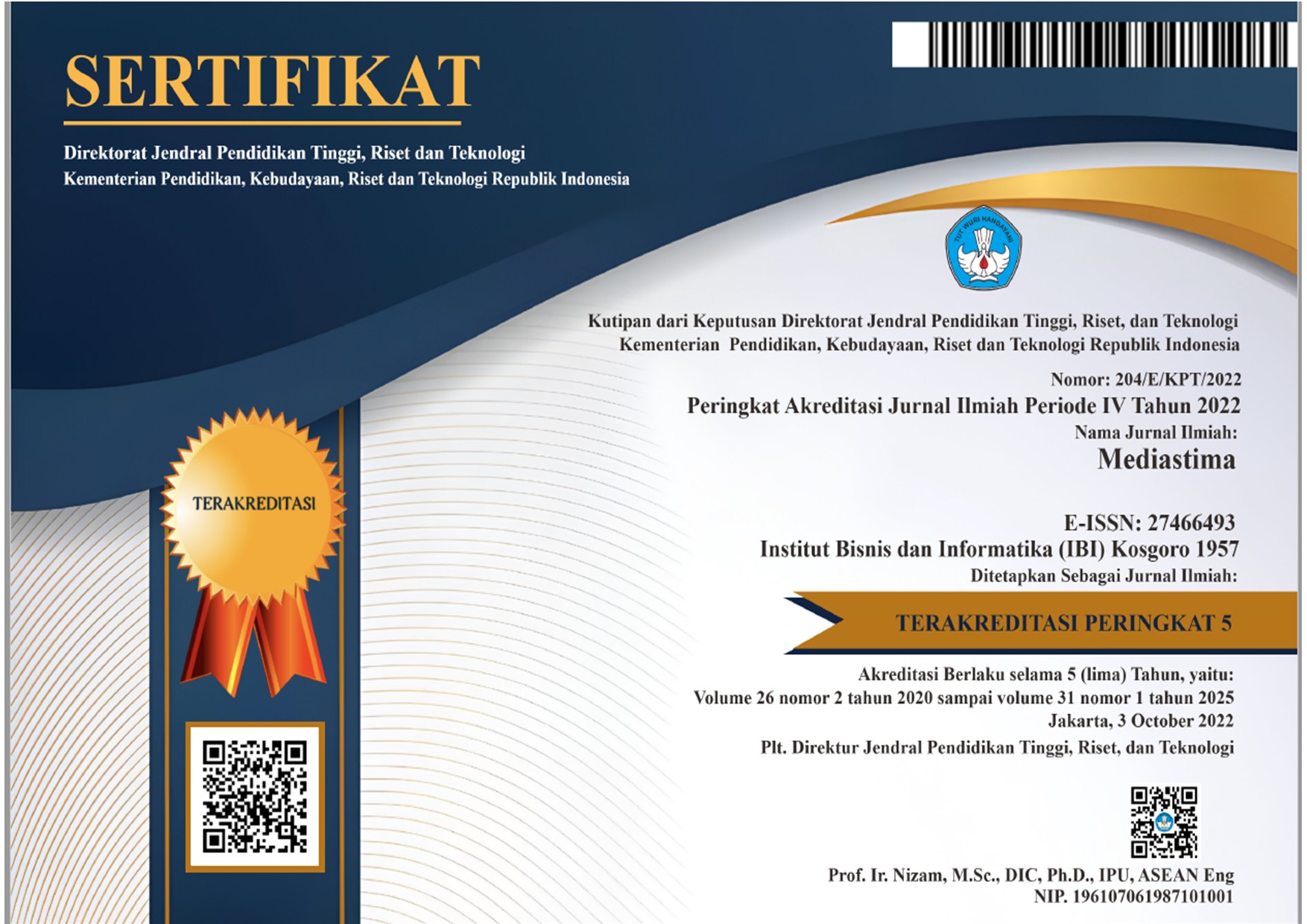Plagiarism & AI Policy
Plagiarism
According to the Regulation of the Minister of National Education Number 17 in the year of 2010 states that plagiarism is an act of intentionally or unintentionally obtaining credit or grade for a scientific work, by citing part or all of the scientific work and/or work of another party, without stating the source explicitly. appropriate and adequate. For this reason, it is deemed necessary to prevent plagiarism. Henceforth, the manuscript submitted to Mediastima will be screened for similarity check using Plagiarism Check. Manuscript found to contain a similarity index percentage higher than 25% (including self-plagiarism) will be rejected.
Duplicate and Redundant Publications
The accepted manuscript has not been published or is being reviewed in other journals. Submitting the same manuscript to more than one journal simultaneously or under review in other journals is not denied. If the manuscript is under review, the author must cite a different previous article. Excessive publication, division of research results into several articles (salami slicing) is unacceptable.
AI Policy
1. It is not permissible for authors to include AI as author in all scientific works.
2. It is not allowed for the author to write the first research draft using AI, because it closes the originality of the research idea.
3. It is not allowed for authors to write cover letters when submitting papers to journals.
4. AI can only be used to find ideas, problems, or research gaps for the author.
5. AI can be used to create an outline / find a research framework and writing framework for writers.
6. AI can be used to help the writer understand the context of the narrative and translation.
7. AI can be used to edit writing for writers.
8. AI can be used by writers to find citations and references but needs validation from supervisors/reviewers/editors.
9. Editors in conducting the editing and review process can use AI but the final result for an article, such as acceptance or rejection, the decision must directly involve the editor.
10. Journal publishers must ensure that all parties (authors, editors and reviewers) who use AI technology have valid scientific and technical competence to be trusted for the final results.
11. Publishers should be transparent about the publishing flow process that involves AI decision-making. Any AI-powered automation should be clearly presented to all relevant stakeholders in the peer review process-authors, reviewers, or editors-with clarification on how the algorithm arrived at its results or conclusions.






